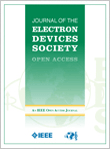
IEEE Journal of the Electron Devices Society
Scope & Guideline
Connecting Academia and Industry in Electron Devices
Introduction
Aims and Scopes
- Electron Device Physics and Modeling:
Research on the fundamental physics of electron devices, including advanced modeling techniques that capture the behavior of semiconductor devices and materials. - Device Fabrication and Characterization:
Studies focused on innovative fabrication techniques and comprehensive characterization methods for various electronic devices, including transistors, diodes, and sensors. - Emerging Materials and Technologies:
Exploration of novel materials (such as 2D materials, ferroelectrics, and wide bandgap semiconductors) and their application in next-generation electronic devices. - Circuit Design and Integration:
Development of circuit design methodologies and integration techniques that leverage new device technologies for applications in computing, communications, and sensing. - Reliability and Performance Optimization:
Investigations into the reliability, performance degradation mechanisms, and optimization strategies for electronic devices under various operational conditions.
Trending and Emerging
- Machine Learning and AI in Device Modeling:
An increasing number of studies are incorporating machine learning algorithms for device modeling and optimization, showcasing the integration of AI technologies in semiconductor research. - Flexible and Wearable Electronics:
Research focused on flexible electronics is on the rise, emphasizing the development of devices that can be integrated into wearable technology for health monitoring and other applications. - Quantum and Neuromorphic Computing:
Emerging themes related to quantum computing and neuromorphic systems indicate a growing interest in next-generation computing paradigms that leverage novel device architectures. - High-Temperature and Cryogenic Applications:
There is a notable increase in studies addressing the performance of electronic devices at extreme temperatures, which is crucial for applications in aerospace and quantum computing. - Sustainable and Green Electronics:
Research aiming at environmentally friendly materials and processes for electronics fabrication is gaining traction, reflecting a broader trend towards sustainability in technology.
Declining or Waning
- Traditional Silicon-Based Devices:
Research on conventional silicon-based devices has decreased, likely due to the growing interest in alternative materials and device architectures that offer superior performance. - Basic CMOS Technology Studies:
Papers focused solely on fundamental CMOS technology without integration of advanced techniques or novel materials are becoming less common, reflecting a shift towards more innovative approaches. - Passive Component Research:
The publication frequency of papers dedicated to passive components like capacitors and inductors has waned, as the community seems to prioritize active devices and integrated solutions.
Similar Journals
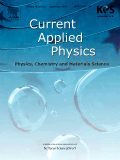
CURRENT APPLIED PHYSICS
Elevating Knowledge in Physics and Material Applications.Current Applied Physics is a leading journal published by Elsevier, specializing in the dynamic fields of Physics and Materials Science. With an ISSN of 1567-1739 and an E-ISSN of 1878-1675, this journal focuses on the latest advancements and applications of physics principles in various practical domains. Operating from the innovative hub of Amsterdam, Netherlands, Current Applied Physics occupies a significant niche in the scientific community, evidenced by its Q2 ranking in both the Physics and Astronomy and Materials Science categories for the year 2023, along with impressive Scopus rankings that highlight its relevance in the fields of General Physics and General Materials Science. The journal's scope encompasses a wide range of topics, fostering interdisciplinary collaboration and facilitating the exchange of knowledge among researchers, professionals, and students. Each issue features peer-reviewed articles that contribute to the understanding and application of physical sciences, making it an essential resource for those aiming to stay at the forefront of research and innovation in applied physics.

Advanced Electronic Materials
Leading the Charge in Materials Science ExplorationAdvanced Electronic Materials is an esteemed journal published by Wiley, dedicated to the forefront of materials science, particularly in the areas of electronic, optical, and magnetic materials. With a commendable impact factor that places it in the Q1 quartile of its category and a Scopus rank of 36 out of 284, the journal is a vital resource for researchers, professionals, and students aiming to contribute to this rapidly evolving field. Launched in 2015 and fully transitioned to Open Access in 2023, the journal promotes widespread dissemination of knowledge, ensuring accessibility to groundbreaking research findings. With its address located in Germany at 111 River St, Hoboken 07030-5774, NJ, it serves a global academic community eager to explore innovative materials technologies that influence diverse applications ranging from consumer electronics to advanced manufacturing. As researchers seek to push the boundaries of what is possible with materials, Advanced Electronic Materials stands as a premier platform for sharing, discovering, and advancing knowledge in this essential domain.
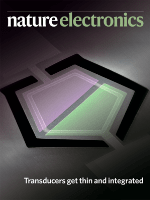
Nature Electronics
Transforming Insights into InnovationsNature Electronics is a premier journal in the field of Electrical and Electronic Engineering, published by NATURE PORTFOLIO. Established in 2018 and converging until 2024, it has swiftly positioned itself as a leading platform for groundbreaking research, holding a prestigious Q1 ranking in multiple categories including Electronic, Optical and Magnetic Materials, and Instrumentation according to the latest 2023 evaluations. The journal boasts an impressive Scopus ranking, securing the top position in Instrumentation and showcasing exceptional standings in both Electrical Engineering and Materials Science. With a commitment to disseminating high-quality research, Nature Electronics offers insightful access to the latest innovations and advancements in the electronics domain, making it an essential resource for researchers, professionals, and students alike. Engaging with this journal enables readers to stay at the forefront of technological progress and fosters discussion on the future of electronic materials and devices.

Transactions on Electrical and Electronic Materials
Connecting Academia and Industry through Cutting-edge ResearchTransactions on Electrical and Electronic Materials, published by Springer, is a distinguished journal aimed at advancing the fields of electrical and electronic engineering, as well as electronic, optical, and magnetic materials. With an ISSN of 1229-7607 and an E-ISSN of 2092-7592, this journal is vital in disseminating impactful research and innovations, providing insights and significant findings that cater to both academia and industry. Holding a Q3 ranking in the categories of Electrical and Electronic Engineering and Electronic, Optical and Magnetic Materials, it serves as a reputable platform for sharing research that influences ongoing developments in these critical areas. The journal's converged years from 2011 to 2024 signify its commitment to providing a comprehensive review of technological advancements. Located in New York City, it appeals to a global audience of researchers, professionals, and students, enhancing their understanding of current trends and practices within the domain.

JOURNAL OF MATERIALS SCIENCE-MATERIALS IN ELECTRONICS
Advancing the Frontiers of Materials in ElectronicsJOURNAL OF MATERIALS SCIENCE-MATERIALS IN ELECTRONICS, published by Springer, is a distinguished international journal that serves as a vital platform for the dissemination of cutting-edge research in the field of materials science, with a keen focus on electronics. Since its inception in 1990, this journal has consistently contributed to the advancement of knowledge across a range of interdisciplinary categories, including Atomic and Molecular Physics, Optical and Magnetic Materials, and Biomedical Engineering, achieving notable quartile positions in various 2023 Scopus rankings. With an impact factor that signifies its scholarly influence, this journal provides a rigorous peer-reviewed environment for researchers and practitioners to share innovative ideas, experimental findings, and theoretical developments. Although it does not currently offer open access options, the depth and breadth of topics covered—including condensed matter physics and bioengineering—make it an essential resource for those at the forefront of materials research. With a commitment to bridging the gap between theory and practical application, the JOURNAL OF MATERIALS SCIENCE-MATERIALS IN ELECTRONICS continues to pave the way for future explorations in the ever-evolving landscape of materials science.
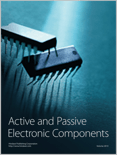
Active and Passive Electronic Components
Exploring the Future of Electronic Materials and TechnologiesActive and Passive Electronic Components, published by HINDAWI LTD, stands as a significant open-access journal dedicated to the fields of electrical and electronic engineering, as well as materials science, particularly focusing on electronic, optical, and magnetic materials. Established in 1985, this journal aims to disseminate high-quality research, experimental studies, and theoretical analyses that contribute to advancements in electronic component technology and applications. Despite its recent category quartile rankings of Q4 in both relevant fields as of 2023, the journal plays an essential role in providing open access to critical findings that may benefit diverse sectors including telecommunications, consumer electronics, and renewable energy systems. Researchers, professionals, and students are encouraged to engage with the latest studies published in this journal, which has seen periods of publication interruption yet remains dedicated to fostering innovative research in its scope. With a commitment to open access, articles are freely available, promoting wider dissemination and collaboration within the scientific community.
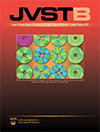
JOURNAL OF VACUUM SCIENCE & TECHNOLOGY B
Advancing the Frontiers of Vacuum Science and TechnologyJOURNAL OF VACUUM SCIENCE & TECHNOLOGY B, published by the AIP Publishing, serves as a vital platform for the dissemination of research in the field of vacuum science and technology. With an ISSN of 2166-2746 and E-ISSN of 2166-2754, this peer-reviewed journal covers a wide array of topics, including condensed matter physics, electrical and electronic engineering, and various materials sciences, underscored by its Q3 quartile rankings across multiple categories in 2023. Although currently operating under a subscription model, the journal is recognized for its robust editorial standards and contribution to advancements in instrumentation and process technology, making it an essential resource for researchers and professionals seeking to stay at the forefront of the field. The journal's comprehensive approach addresses both theoretical and practical aspects of vacuum technology, fostering innovation and collaboration among the academic community. Additionally, the journal spans converged years of research from 1991 to 1992 and 2009 to 2024, reflecting its dynamic evolution and relevance in addressing contemporary scientific inquiries.
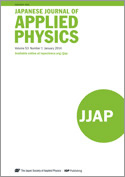
JAPANESE JOURNAL OF APPLIED PHYSICS
Empowering Discoveries in Applied SciencesThe Japanese Journal of Applied Physics is a premier publication in the field of applied physics, offering a platform for researchers and professionals to present their findings and innovations. Published by IOP Publishing Ltd, this esteemed journal has been active since 1963 and continues to contribute significantly to the understanding and advancement of applied physics across diverse applications. The journal is recognized for its rigorous peer-review process and high-quality publications, evidenced by its 2023 ranking of Q2 in Engineering (Miscellaneous) and Q3 in Physics and Astronomy (Miscellaneous). With an accessible ISSN of 0021-4922 and E-ISSN 1347-4065, the journal cultivates a global readership, fostering collaboration and innovation within the scientific community. Although the journal does not currently offer open access options, its valuable insights into the latest technological advancements and theoretical developments remain crucial for students, researchers, and industry professionals alike. By bridging the gap between fundamental physics and practical applications, the Japanese Journal of Applied Physics plays a vital role in shaping the future of applied sciences in Japan and beyond.
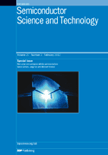
SEMICONDUCTOR SCIENCE AND TECHNOLOGY
Pioneering discoveries in condensed matter physics and technology.Semiconductor Science and Technology is a pivotal journal in the fields of condensed matter physics, electrical and electronic engineering, and materials science, published by IOP Publishing Ltd. With an ISSN of 0268-1242 and an E-ISSN of 1361-6641, this esteemed journal has been disseminating groundbreaking research since 1986 and is set to continue through 2024. Recognized in the latest categorizations, it holds a notable Q2 ranking in Condensed Matter Physics, Electrical and Electronic Engineering, and Materials Chemistry, alongside a Q3 ranking in Electronic, Optical, and Magnetic Materials, highlighting its significant contribution to the advancement of these disciplines. Although it does not operate under an open access model, the journal provides critical access options for researchers and professionals seeking to foster innovation and collaboration within the semiconductor community. As a vital resource, Semiconductor Science and Technology not only supports the dissemination of high-quality research but also serves as a platform for emerging trends and developments that are shaping the future of semiconductor technology.
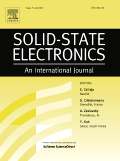
SOLID-STATE ELECTRONICS
Driving Knowledge in Electrical and Electronic EngineeringSOLID-STATE ELECTRONICS, published by Pergamon-Elsevier Science Ltd, is a highly regarded journal committed to advancing the field of solid-state physics and its applications. With an ISSN of 0038-1101 and an E-ISSN of 1879-2405, this journal has been a cornerstone of scholarly communication since its inception in 1960. Covering a rich spectrum of topics, it features in the Q3 category for Condensed Matter Physics, Electrical and Electronic Engineering, and Materials Science, reflecting its robust engagement in these critical fields. Despite not being an open-access journal, it provides valuable insights and research findings accessible to both academia and industry professionals, ensuring the dissemination of cutting-edge knowledge. With a strong focus on empirical research and theoretical developments, SOLID-STATE ELECTRONICS aims to bridge the gap between fundamental science and practical application, making it an essential resource for researchers, professionals, and students alike in the United Kingdom and beyond.